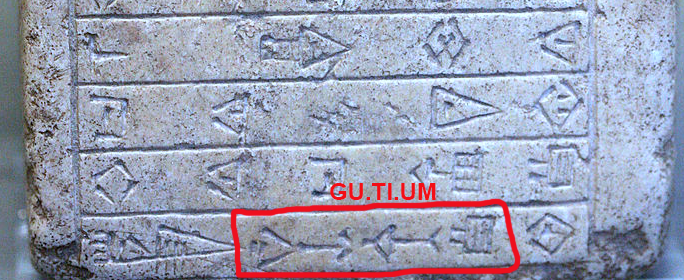
Re-reading the ancient Sumerian myths, within the extensive epic poem “Lugal.e” of over seven hundred verses, also known as “Ninurta and the Stones “Or in English,” Ninurta’s exploits ” I have stumbled upon what might be considered a glimpse of Holocene in Mesopotamia, at the beginning of the thaw:
“At this time, life-giving water,
It still did not flow from the ground
Rather, transformed into accumulated ice
When it merged, it formed ravines in the mountains
In such a way that the gods of the country
Submitted to this forced labor,
They had, for such was their work,
To carry with the beak and the carrycot.
For there were no other workers to turn to,
in order to ensure production.
At its highest level the Tigris still did not provoke
The floodwaters
And as it didn’t yet disembogue into the sea,
He did not pour his fresh water there. ”
It is significant that the Euphrates is not mentioned, which supports the theory of the existence of a single primordial river, which, after sealing the Arabian Gulf with the silt dragged from the mountains, turned southern Mesopotamia into a marshy jungle. We are talking about antediluvian times, when, according to the myth, man had not yet been created. No doubt the text is evocative, combining physical aspects of nature and mithological concepts known.
It is fascinating to be able to count on texts as old as this, although it was composed about 2100 BC, after the fall of Akkad because of the Guti invasions, probably in Gudea times, as there are mentions in the text which suggest it (1), we can not date the previous oral tradition, probably millennial. Unfortunately the text is a pure pastiche of previous traditions, with the sole object of glorifying the god of the Girsu area, Lagash and surroundings, also Nippur. Lagash means “warehouse” and it is probable that from there, the remains of the Sumerian oligarchy, once destroyed the Akkadian empire, to which they were subject, tried to reconstruct its old power.
Gudea is an atypical character, Researchers are reluctant to translate his name, although the meaning seems obvious:
GU DE A
So “Gu” is “voice”, “De” is “to spread”, in sum is usually translated as “calling”, “naming”, “speaking” or even “reading(in public)”. “a” is a verbal suffix here, that functions as a particle to construct the participle of the verb, so it can be translated as” the named, called or convoked “, which coincides with what we know of this character, since he did not belong to the Royal house, also interestingly his devotion was not addressed exclusively to Ninurta, the official god of the kingdom, but to Ningishzidda and his wife Geshtinanna, which abounds in the theory that he was not a type of the area. It is believed that it was the king of Lagash, Urbaba who fabricated the framework that would lead to the rebirth of Sumerian hegemony, placing one of his daughters as a high priestess in Ur and marrying another with “the chosen one”, there is no record of why this guy in particular.
For a while it occurred to me that perhaps Gudea was a Guti convert, given the phonetic similarity, would not be an isolated case, the Goths and Scandinavian tribes had that kind of relation with the preexisting monarchies, as can be seen in the fantastic TV series, “Vikings”. However, I abandoned the idea after finding that the names of Gudea and Gutium had nothing to do according to the cuneiform writting:

This was not the case for the researcher Julius Oppert, who made absurd claims of racial character on the Guti people, although it is very probable that their origin is Caucasian, obviously he was mediated by racism that had been generalized in large parts of Europe in its time. He claimed, for example, that NAM.RUM or NAM.RU.TUM, as the captured Guti slaves were called, meant “light colored”, and even came to assimilate the Guti with the Goths and the Scandinavians, despite the distance in the time. Who knows, the Celts have been known since prehistory even though their original name, “Gauls or Gaelics” has been replaced by the Greek equivalent Keltoi. Another thing is the meaning of NAM.RUM, which does not seem to mean what Oppert defended, and although even today many experts refuse to pronounce themselves, declaring the term as untranslatable, there are several options: “NAM.RA” means literally “Booty animate”, “prisoner” probably, and along with “RU” (architectural feature) and “TUM” (perfect) could be read as “masonry slaves”, in fact NAM is the prefix of multiple professions related to manual work.
In the rest of the poem, Ninurta dispatches the rebellion of populations dedicated to the supply of lytic material, represented as a fearsome a.sag (demon, disease, misfortune).
(1) On the Diorite: “… When a king, for ever famous, wishes to command that eternal statues be carved with you, to erect them there, where the libations are done…”
Bibliography :
“Lorsque les dieux faisaient l’homme” by Bottero & Kramer.
Wikipedia
ePSD.
Sumerian Lexicon


